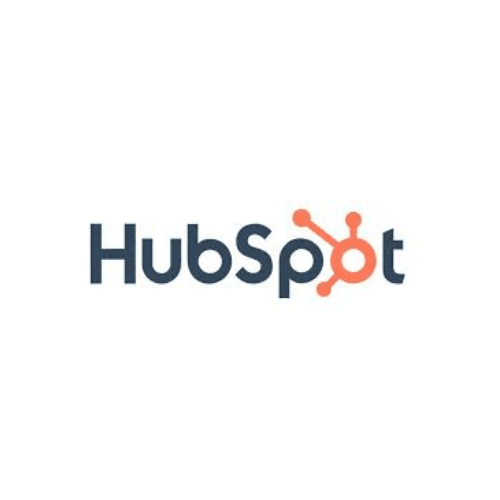Social media management is critical for SaaS organizations seeking to increase their online presence, communicate with clients, and promote their brand. In today's digital-first society, using social media platforms is no longer a choice; it's a need.
This article will explain what social media management is, why it's important for SaaS firms, the best tools for streamlining your efforts, and how to optimize your social strategy.
What Is Social Media Management?
Social media management involves creating, scheduling, analyzing, and engaging with content posted across social media platforms like Facebook, Instagram, Twitter (now X), LinkedIn, and others. For SaaS companies, it’s a way to connect with customers, answer questions, promote products, and build long-term relationships with users.
But it’s more than just posting content. Social media management also includes tracking performance metrics, listening to what users say about your brand, and making data-driven decisions to improve your strategy over time.
Why Social Media Management Matters for SaaS Companies?
SaaS companies thrive on user trust and engagement. Unlike traditional businesses, where the relationship often ends after a purchase, SaaS companies need long-term user loyalty and subscription renewals. That’s where social media comes in.
Here’s why effective social media management is crucial for SaaS:
Brand Awareness:
SaaS companies can use social platforms to increase brand visibility, reaching potential customers who may not have heard of them otherwise.
Customer Engagement:
Social media allows for real-time communication with users. Answering questions, responding to feedback, and offering support all contribute to a positive customer experience.
Lead Generation:
Platforms like LinkedIn and Twitter are powerful for generating leads. SaaS companies can use targeted ads and organic posts to attract potential customers.
Reputation Management:
People talk about brands on social media, whether the brand participates in the conversation or not. SaaS companies can monitor mentions, address complaints, and maintain a positive reputation.
Thought Leadership:
Posting informative content like blog posts, whitepapers, and case studies establishes your company as an industry leader, helping to build trust with your audience.
Elements of Effective Social Media Management
To excel in social media management, it’s important to understand and implement the following core elements:
1. Content Creation
Content is king on social media. Regularly producing high-quality, interesting material piques your audience's attention and encourages them to connect with your company. For SaaS firms, this may include:
- Product updates
- Blog posts
- How-to guides
- Webinars
- Case studies
- User-generated content
2. Content Scheduling
Consistency is key. Using social media scheduling tools like Buffer, Hootsuite, or Sprout Social allows you to plan and schedule posts in advance. This saves time and ensures you post at optimal times, even if you're not physically present to hit "publish."
3. Performance Analytics
Tracking the performance of your posts is critical to improving your strategy. Key metrics for SaaS companies include engagement rates, click-through rates, conversions, and customer sentiment. By using analytics tools, you can fine-tune your content and posting strategy to meet your business goals.
4. Social Listening
Social listening involves monitoring your brand’s mentions across platforms to understand what people are saying about your company. It helps you gauge customer sentiment and provides insights into what users love (or hate) about your service. Tools like Brandwatch or Mention can assist in this area.
5. Customer Engagement
Responding to user comments, answering questions, and engaging with your followers is essential for building a loyal community. Social media isn’t a one-way street; it’s a conversation. SaaS companies should aim to respond to every customer query or comment, whether positive or negative.
Best Social Media Platforms for SaaS Companies
Not all social media platforms are created equal. SaaS companies should focus on the platforms where their target audience is most active. Here are the top platforms to consider:
1. LinkedIn
LinkedIn is the most important platform for SaaS companies targeting businesses (B2B). It’s great for sharing industry insights, product updates, and company news. You can also run targeted ads aimed at decision-makers within your industry.
2. Twitter (X)
Twitter is ideal for SaaS companies looking to engage in real-time conversations, share quick updates, and monitor industry trends. It’s also great for customer support, as users often turn to Twitter to ask questions or voice their concerns.
3. Facebook
Facebook is a versatile platform that can be used for customer engagement, ads, and content sharing. It’s especially effective for community-building through groups, where you can gather users to discuss your product, offer support, or share updates.
4. Instagram
While Instagram is typically more visually oriented, SaaS companies can still benefit from using it. Instagram Stories, Reels, and carousel posts are effective for showcasing product features, customer testimonials, or behind-the-scenes content.
5. YouTube
For SaaS companies that produce educational content or product demos, YouTube is a must. It’s the second-largest search engine after Google, making it an excellent platform for discoverability.
6. TikTok
Though not as popular in the B2B space, TikTok can be an innovative way to engage younger audiences. SaaS companies that embrace short, fun, and educational videos may find success on this fast-growing platform.

The Best Social Media Management Tools for SaaS Companies
Managing social media manually can be time-consuming. Thankfully, there are several tools available to automate tasks, track performance, and streamline workflows. Here are some of the best social media management tools for SaaS companies:
1. Buffer
Buffer allows you to schedule posts across multiple social platforms. Its intuitive interface and analytics features make it perfect for SaaS companies looking to manage content easily.

2. Hootsuite
Hootsuite is one of the most popular social media management tools. It offers robust scheduling, analytics, and team collaboration features, making it ideal for larger SaaS teams.

3. Sprout Social
Sprout Social combines social media scheduling, monitoring, and analytics in one platform. It’s great for SaaS companies focused on customer engagement and in-depth reporting.

4. HubSpot Social Media Tools
If you’re already using HubSpot’s CRM, their social media tools are a natural fit. They offer social scheduling, monitoring, and analytics, all integrated into the HubSpot ecosystem.

5. Agorapulse
Agorapulse is a comprehensive tool offering scheduling, social listening, and reporting features. It’s particularly good for SaaS companies that want to centralize all their social media tasks in one platform.

Best Practices for SaaS Social Media Management
To make the most of social media management for your SaaS company, follow these best practices:
1. Create a Social Media Calendar
A well-organized social media calendar helps you plan your content, ensuring a consistent flow of posts. Use tools like Google Sheets or specialized platforms like Trello to keep your team aligned on what’s being posted and when.
2. Engage Consistently with Your Audience
Don’t just post content engage! Respond to comments, ask questions, and start conversations with your followers. Engagement is a two-way street, and active participation helps build trust.
3. Use Data to Drive Decisions
Use analytics to understand what’s working and what isn’t. Adjust your content strategy based on data rather than gut feelings. The more you optimize based on insights, the better your results will be.
4. Incorporate User-Generated Content
User-generated content (UGC) is a great way to build trust and credibility. Encourage your customers to share their experiences with your SaaS product, and re-share that content across your social platforms.
5. Experiment with Paid Social Campaigns
While organic reach is important, paid social media campaigns can help boost visibility and drive conversions. Start small, test various ad formats (e.g., LinkedIn Sponsored Content, Facebook Carousel Ads), and scale what works.
Common Social Media Errors to Avoid
Even with the best intentions, many SaaS companies make social media mistakes that limit their success. Here are some pitfalls to watch out for:
- Sporadic posts lead to audience disengagement. Keep a regular posting schedule to stay top of mind.
- Failing to track and measure your social media performance means you’re flying blind. Use analytics to guide your strategy.
- Social media isn’t just a sales platform. Focus on providing value, engaging with users, and solving their pain points rather than just pushing your product.
- Social media is a conversation. Ignoring your followers’ comments or questions will harm your brand image.
For SaaS companies, effective social media management can be a game-changer. It helps build brand awareness, drive engagement, generate leads, and retain customers. By following the best practices outlined in this guide and using the right tools, your SaaS business can thrive in the social media landscape.




